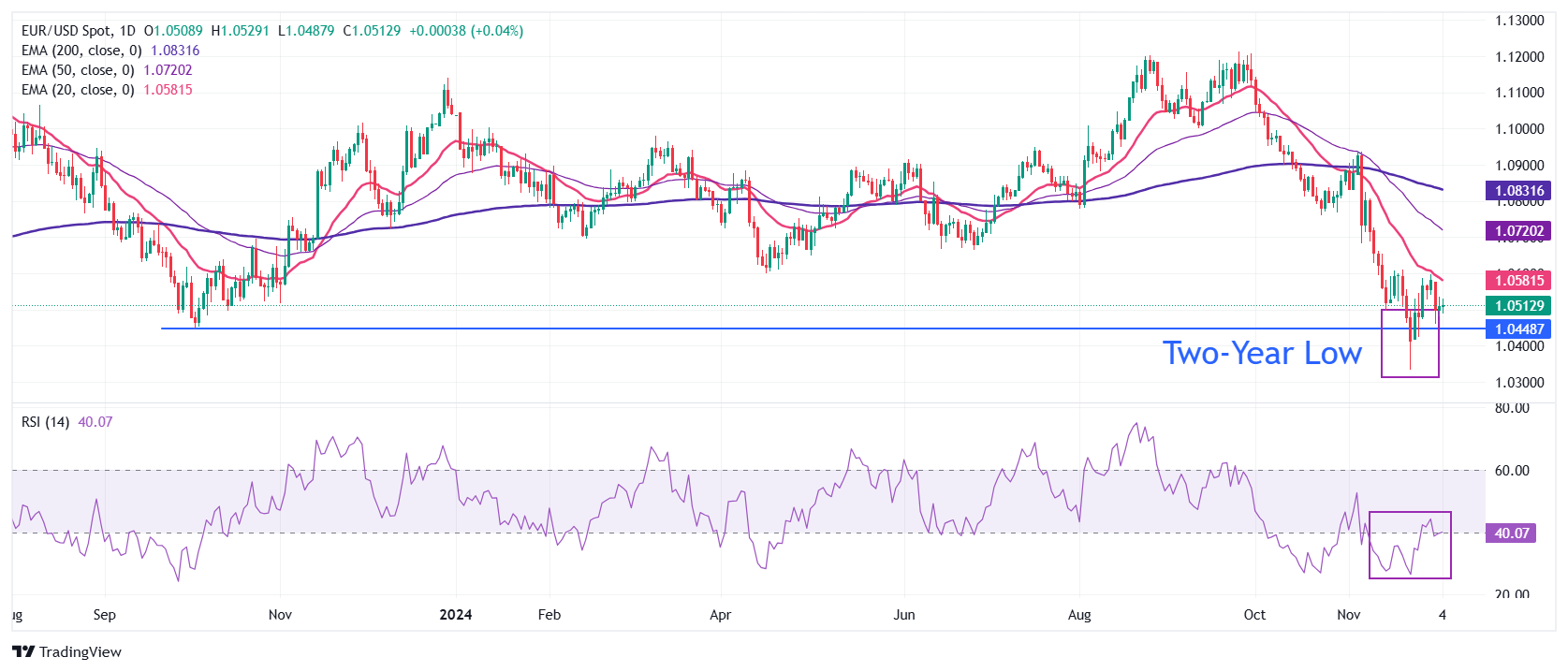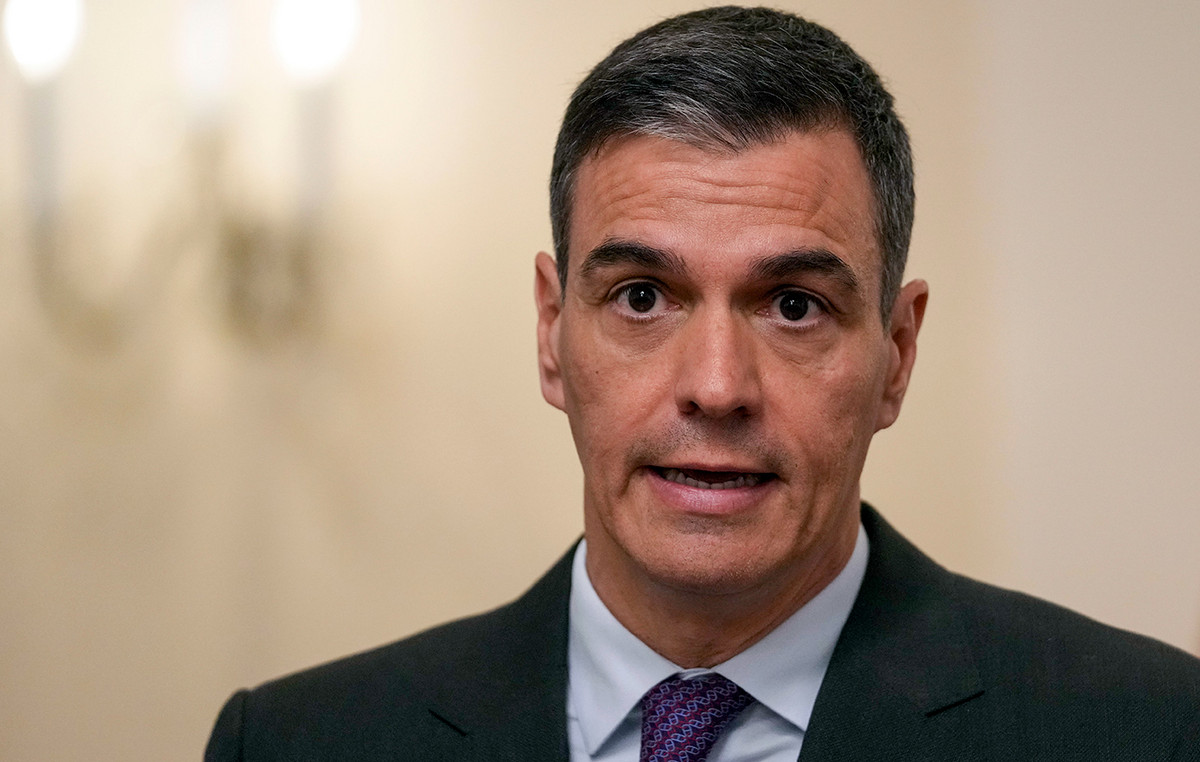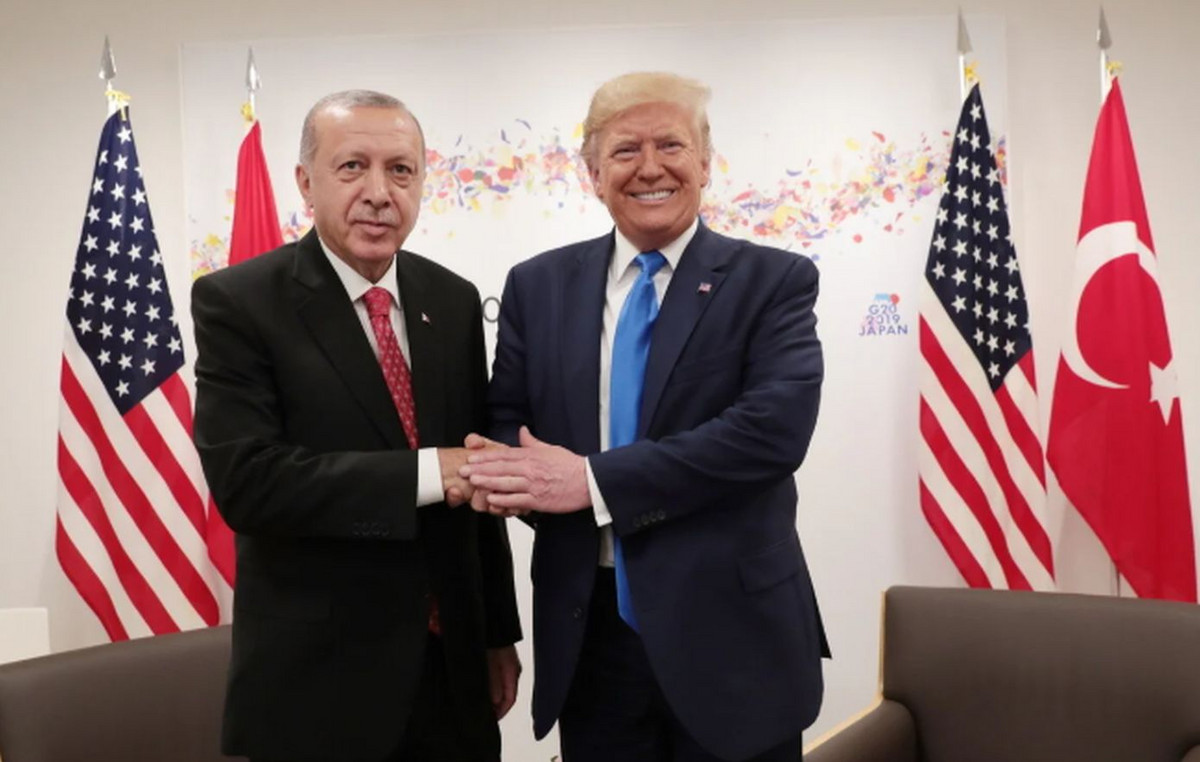- EUR/USD gains slightly with investors focused on political tensions in France as the no-confidence vote against the prime minister looms.
- ECB’s Holzmann supports a 25 bp interest rate cut at a policy meeting on December 12.
- Investors will also focus on US private employment and services PMI data for November.
EUR/USD advances and holds the key support of 1.0500 in European trading hours on Wednesday. The main currency pair remains in a sideways range as investors await the no-confidence vote by French far-right and left-wing parties against Prime Minister Michel Barnier. The vote has increased political uncertainty in the Eurozone’s second-largest nation due to increasing chances that the French government will collapse, hurting the Euro (EUR).
Looking at the economic calendar, investors will also focus on the United States (US) ADP employment change data and the ISM Services Purchasing Managers’ Index (PMI) for November, which will be released later in the session. North American.
Economists expect the US private sector to have added 150,000 new jobs in November, down significantly from 233,000 in October. Over the same period, the services PMI – which measures activity in the services sector – is estimated to decline to 55.5 from the previous release of 56.0, suggesting a slowdown in growth.
The economic data will influence market expectations for the Federal Reserve’s (Fed) likely interest rate action at its December 18 monetary policy meeting. According to the CME FedWatch tool, there is a 74% chance that the Fed will reduce its key interest rates by 25 basis points (bps) to 4.25%-4.50% and a 26% chance that rates will be remain unchanged at current levels.
In Wednesday’s session, investors will also focus on the Fed’s Beige Book and Chairman Jerome Powell’s speech for fresh guidance on interest rates.
Meanwhile, a number of Fed officials have recently said they consider further interest rate cuts appropriate as inflation continues to cool. “I hope it will be appropriate to continue moving toward a more neutral policy setting over time,” New York Fed President John Williams said Monday. However, Williams did not provide any target for the Fed Funds rate and said the path would depend on the data.
Ahead of private sector employment data and service sector activity, the US Dollar (USD) is trending moderately. The Dollar Index (DXY), which tracks the value of the Dollar against six major currencies, is hovering around 106.30.
The outlook for the US Dollar remains broadly positive as US President-elect Donald Trump threatened to impose 100% tariffs on the BRICS. “The idea that the BRICS countries are trying to get away from the dollar while we stand by and watch is OVER,” Trump wrote in a social media post over the weekend.
Daily Market Summary: EUR/USD Could Remain Jittery Ahead of France No-Confidence Vote
- The censure debate in France is scheduled to begin at 15:00 GMT, and the vote should occur around three hours later. Since Marine Le Pen announced on Monday that her party would vote to overthrow the government, someone from the left-wing parties would now be required to change their position for Prime Minister Barnier to win the vote and prevent the fall of the government.
- EUR/USD gains slightly while the US dollar declines. Meanwhile, the outlook for the Euro (EUR) remains weak as European Central Bank (ECB) officials support further interest rate cuts. Traders expect the ECB to cut its key interest rates again at its Dec. 12 policy meeting, but are divided over the likely size of the rate cut.
- ECB policymaker and Austrian Central Bank governor Robert Holzmann said in an interview with the newspaper Oberoesterreichische Nachrichten on Tuesday: “Based on current data, I think a reduction of 0.25 percentage points is conceivable, no more “
- Asked about his views on the Eurozone inflation outlook, Holzmann said he sees inflation risks skewed to the upside due to Trump’s tariff policies. However, the magnitude of the effect will depend on how you implement the policies.
- By contrast, ECB executive board member Piero Cipollone said on Tuesday that US tariffs would weaken the economy, resulting in lower consumption and therefore less pressure on consumers. prices.
Technical Analysis: EUR/USD consolidates around 1.0500
EUR/USD is trading in a tight range near 1.0500 in the European session on Wednesday. The outlook for the major currency pair remains bearish as all short-term and long-term EMAs are declining, pointing to a downtrend.
The 14-day Relative Strength Index (RSI) remains near 40.00, suggesting that the bearish momentum has faded. However, the bearish trend has not died out.
Looking down, the November 22 low at 1.0330 will be key support for Euro bulls. On the other hand, the 50-day EMA near 1.0750 will be the key barrier for the Euro bulls.
The Euro FAQs
The Euro is the currency of the 19 countries of the European Union that belong to the eurozone. It is the second most traded currency in the world, behind the US dollar. In 2022, it accounted for 31% of all foreign exchange transactions, with an average daily turnover of more than $2.2 trillion per day. EUR/USD is the most traded currency pair in the world, accounting for an estimated 30% of all transactions, followed by EUR/JPY (4%), EUR/GBP (3%) and EUR/AUD (2 %).
The European Central Bank (ECB), headquartered in Frankfurt, Germany, is the reserve bank of the eurozone. The ECB sets interest rates and manages monetary policy. The ECB’s primary mandate is to maintain price stability, which means controlling inflation or stimulating growth. Its main tool is the increase or decrease in interest rates. Relatively high interest rates (or the expectation of higher rates) tend to benefit the euro and vice versa. The Governing Council of the ECB makes decisions on monetary policy at meetings held eight times a year. Decisions are made by the directors of the Eurozone’s national banks and six permanent members, including ECB President Christine Lagarde.
Eurozone inflation data, measured by the Harmonized Index of Consumer Prices (HICP), are an important econometric indicator for the euro. If inflation rises more than expected, especially if it exceeds the ECB’s 2% target, it forces the ECB to raise interest rates to bring it back under control. Relatively high interest rates compared to their counterparts tend to benefit the euro, making the region more attractive as a place for global investors to park their money.
The published data measures the health of the economy and may have an impact on the euro. Indicators such as GDP, manufacturing and services PMIs, employment and consumer confidence surveys can influence the direction of the single currency. A strong economy is good for the Euro. Not only does it attract more foreign investment, but it may encourage the ECB to raise interest rates, which will directly strengthen the euro. Otherwise, if economic data is weak, the Euro is likely to fall. The economic data for the four largest eurozone economies (Germany, France, Italy and Spain) are especially significant, as they represent 75% of the eurozone economy.
Another important data that is published about the Euro is the trade balance. This indicator measures the difference between what a country earns from its exports and what it spends on imports during a given period. If a country produces highly in-demand export products, its currency will gain value simply from the additional demand created by foreign buyers seeking to purchase those goods. Therefore, a positive net trade balance strengthens a currency and vice versa in the case of a negative balance.
Source: Fx Street
I am Joshua Winder, a senior-level journalist and editor at World Stock Market. I specialize in covering news related to the stock market and economic trends. With more than 8 years of experience in this field, I have become an expert in financial reporting.








